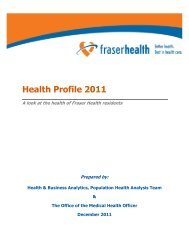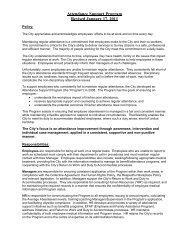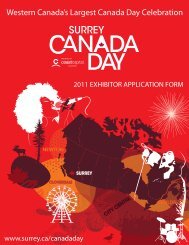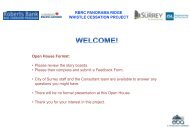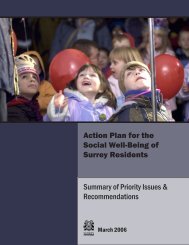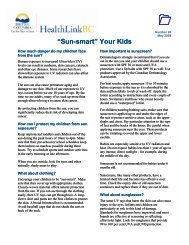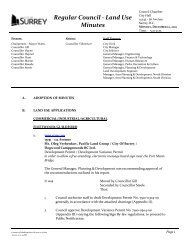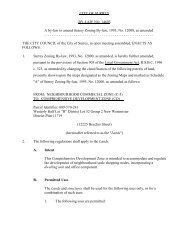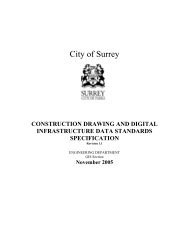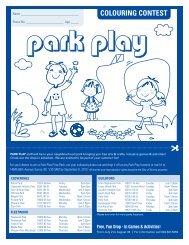Blackie Spit Park: Wildlife Habitat Enhancement Plan - City of Surrey
Blackie Spit Park: Wildlife Habitat Enhancement Plan - City of Surrey
Blackie Spit Park: Wildlife Habitat Enhancement Plan - City of Surrey
Create successful ePaper yourself
Turn your PDF publications into a flip-book with our unique Google optimized e-Paper software.
Management Unit 16: Coastal Beach<br />
1.0 Existing Conditions<br />
Management Unit 16 (Drawing 12) is a small, roughly mowed area (Figure 45). The current<br />
vegetation consists <strong>of</strong> grass species, yarrow, plantain, hairy cat’s ear, dandelion, cinquefoil, sweet<br />
clover, beach rye and other species. The soil is sand with an organic veneer.<br />
2.0 Goals and Objectives<br />
This unit would be managed as a continuation <strong>of</strong> the existing adjacent beach and the MU 15 intertidal<br />
area.<br />
Species Management Goal<br />
Coastal beach vegetation and associated birds and invertebrates.<br />
<strong>Habitat</strong> Management Objectives<br />
• Place a mixture <strong>of</strong> gravelly and sandy substrates (with high shell content) over entire area to<br />
enable duplication <strong>of</strong> natural open coastal beach vegetation;<br />
• <strong>Plan</strong>t appropriate native plants (e.g. dunegrass, beach pea (Lathyrus japonicus), large-headed<br />
sedge, and beach morning-glory (Convolutus soldanella) (not to be confused with the weedy<br />
species <strong>of</strong> morning glory growing elsewhere in the park);<br />
• Maintain spit access trail along south side.<br />
3.0 Management Prescriptions<br />
This unit will duplicate the sand/gravel/shell pocket beaches found along the coast, likely also<br />
occurring at one time in the vicinity <strong>of</strong> Crescent Beach-White Rock.<br />
3.1 Initial <strong>Enhancement</strong> Requirements<br />
• Skim <strong>of</strong>f the existing vegetation and organic veneer, although leave the dunegrass in place.<br />
Because the soil contains seeds <strong>of</strong> the species currently growing there, it will not be reused on<br />
site.<br />
• Place about 50 cm <strong>of</strong> sandy and gravelly substrate (about 650 m 3 ), if possible using screened<br />
material (with fine and coarse material removed) from MU 15. If a source <strong>of</strong> fragmented shells<br />
can be found, mixing this into the surface layers, especially on the leading (seaward) edge, will<br />
duplicate the shell content appearance <strong>of</strong> beaches in many areas (such as occurs on the outside<br />
<strong>of</strong> Cannery <strong>Spit</strong>).<br />
• Convert the “corner” <strong>of</strong> the parking area between MU 15 and MU 16 (Drawing 12) to become<br />
part <strong>of</strong> MU 16 by removing the hard-packed gravel surface to a depth <strong>of</strong> about 0.5 m and<br />
replacing with sand/gravel.<br />
• Place driftwood (preferably not commercially cut for aesthetic reasons) along the upper edge.<br />
• <strong>Plan</strong>t the following species. If commercial sources <strong>of</strong> plant material cannot be found, it may be<br />
possible to collect seeds or plants locally.<br />
<strong>Blackie</strong> <strong>Spit</strong> <strong>Park</strong>: <strong>Wildlife</strong> <strong>Habitat</strong> <strong>Enhancement</strong> <strong>Plan</strong> – Management Unit 16 73



